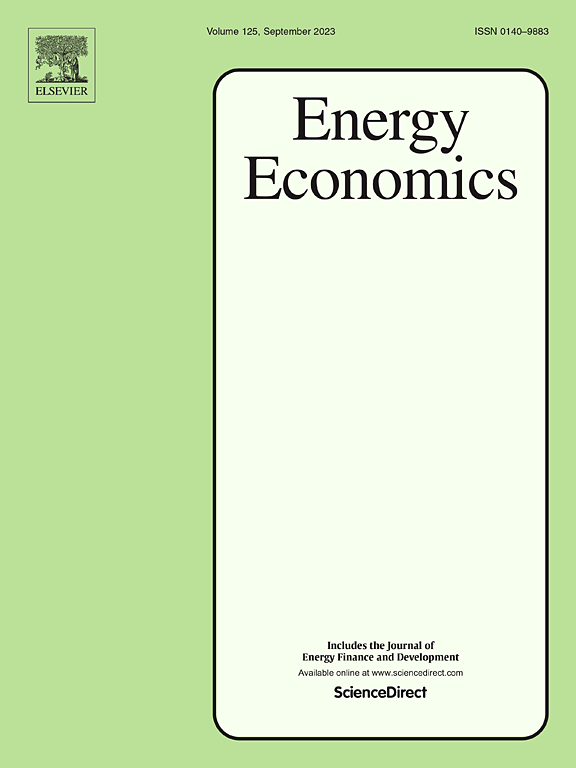高铁开放、企业集聚与碳排放:来自中国的证据
IF 13.6
2区 经济学
Q1 ECONOMICS
引用次数: 0
摘要
本文从集聚和高铁站点可达性两个角度考察了交通基础设施对企业碳排放的影响。我们的识别使用了中国高铁站的开通。我们的差中差估计结果表明,高速铁路的开通促进了企业碳减排。结果表明:高铁开通降低了要素流动的距离约束,促进了企业创新;另一方面,高铁的扩张提高了资源配置效率,推动了企业间的分工、合作和集聚。与此同时,高铁开通对企业碳减排具有正向影响,企业可达性对企业碳减排具有中等影响。研究结果也丰富了相关文献,为政策制定者提供了实证支持。本文章由计算机程序翻译,如有差异,请以英文原文为准。
High-speed railway opening, firm agglomeration and carbon emission: Evidence from China
This paper investigates whether the transportation infrastructure affects firm carbon emissions from agglomeration and firm accessibility to high-speed railway (HSR) stations perspectives. Our identification uses the opening of HSR stations in China. Our difference-in-differences estimation results show that the opening of high-speed railway (HSR) promotes firm carbon abatement. Specifically, we confirm that for one thing, the opening of high-speed railway reduces the distance constraints for factors mobility and promotes firms' innovation; for another thing, the expansion of the HSR improves resource allocation efficiency and drives the division of labor, cooperation, and agglomeration among firms. Meanwhile, we identify the moderate effect of firm accessibility to its nearest HSR stations, which positively affects the impact of the opening of HSR on firm carbon abatement. Our findings also enrich related literature and provide empirical support for policymakers.
求助全文
通过发布文献求助,成功后即可免费获取论文全文。
去求助
来源期刊

Energy Economics
ECONOMICS-
CiteScore
18.60
自引率
12.50%
发文量
524
期刊介绍:
Energy Economics is a field journal that focuses on energy economics and energy finance. It covers various themes including the exploitation, conversion, and use of energy, markets for energy commodities and derivatives, regulation and taxation, forecasting, environment and climate, international trade, development, and monetary policy. The journal welcomes contributions that utilize diverse methods such as experiments, surveys, econometrics, decomposition, simulation models, equilibrium models, optimization models, and analytical models. It publishes a combination of papers employing different methods to explore a wide range of topics. The journal's replication policy encourages the submission of replication studies, wherein researchers reproduce and extend the key results of original studies while explaining any differences. Energy Economics is indexed and abstracted in several databases including Environmental Abstracts, Fuel and Energy Abstracts, Social Sciences Citation Index, GEOBASE, Social & Behavioral Sciences, Journal of Economic Literature, INSPEC, and more.
 求助内容:
求助内容: 应助结果提醒方式:
应助结果提醒方式:


